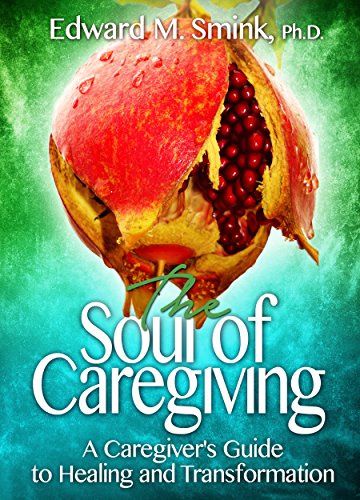Who are the caregivers? We all are, for at the heart of being human is the capacity to care, to reach out to others and explore the relationships we build. The Soul of Caregiving is about us and how we, as caregivers, serve, even sacrifice, for those in need. I invite you to explore with me how we have the opportunities to partake in a kind of pilgrimage along the path of our experiences as caregivers. Who will be your guide on this journey? Unlike other pilgrims who have a guide assigned to them, you will soon discover it is your own Soul guiding you. Professionally skilled as we may be to meet the needs of others, a fundamental core component of our busy lives as caregivers, is the necessity to stop and rest. It is not a waste of time, but rather a luxury of time, to ponder, reflect, and grow from our experiences. Not an easy endeavor in the midst of a whirlwind of activity. We, as caregivers, experience vulnerability, helplessness, fears, and pain over the traumatic events we experience because we care. We care about those whom we are called to serve. Compassion fatigue comes about because we care.
In Chapter One, I call this tension between activity and reflection, “the Dance of Caregiving,” a dance between the caregiver’s needs and those of the one in need. The chapter is an introduction to exploring something we do every day: to reflect on our experiences.
Chapter Two, “Reclaiming Soul,” asks the question, “What is Soul?” and how is the caregiver empowered and sustained. Discovering Soul implies going deeper into the inner caverns of our being, listening to the inner beats of our heart where insight and wisdom abide
“Once Upon a Time in the Land of OZ,” Chapter Three, explores the universal underpinnings of the role of caregiving, as each profession exists in the broader mythic and archetypal realm of a culture.
In Chapter Four, “Truce or Consequences,” both the mythos and logos of caregiving are explored. Each relates to faithless science and unscientific faith, leading to a unity of the left and right brain functions.
“The Ins and Outs of Hospitality,” in Chapter Five, discusses how the caregiver, as host, experiences three different dimensions of hospitality: the caregiver who hosts the stranger, the caregiver who hosts his or her reactions and experiences, and thirdly, the caregiver who welcomes the stories of the guests they host.
Chapter Six, “Love is a Wounded Healer,” addresses an ancient question of the frailty of humankind. There is within each of us a space that seeks wholeness and transformation, an area of woundedness which often shows its face in the midst of our caregiving.
“Cultivating the Soul’s Garden,” Chapter Seven, addresses the art of reflection as a fundamental skill for caregivers. An understanding of Soul implies allowing the moment to take root and to reflect on how to nourish and sustain ourselves as caregivers.
Chapter Eight focuses on “Spirituality: The Sinew of Human Experience” where imagination helps one discover meaning, arguing that the essential actions of a caregiver are spiritual.
In Chapter Nine “Practice, Practice, Practice” I explore what a practice is and how caregiving is a spiritual practice. The ordinary becomes spiritual, as inner strengths and values give birth to meaning, insight, and transformation.
The “Soul of Caregiving” concludes with Chapter Ten, “Warning: Our Tank is Almost Empty” which explores compassion fatigue and its two sisters, secondary traumatic stress and burnout. We experience compassion fatigue because we care. look at how to recognize the warning signs, take action, avoid them, recover from them in building compassion resilience.

